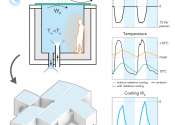A cooling system that works without electricity
It looks like a regular roof, but the top of the Packard Electrical Engineering Building at Stanford University has been the setting of many milestones in the development of an innovative cooling technology that could someday ...
Sep 5, 2017
2
2238









